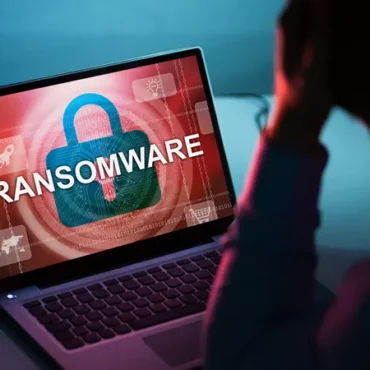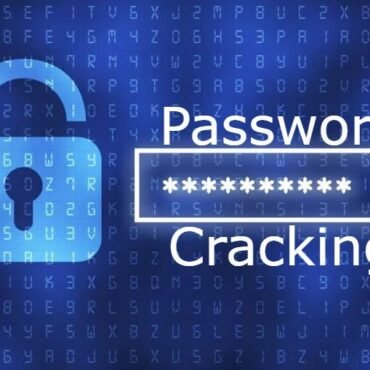The Art & Science of Password Cracking in Forensics — A Practical Guide by Hawk Eye Forensic
Introduction
In digital forensics, passwords are often the last barrier between an investigator and crucial evidence. Password cracking is both an art — requiring intuition, creativity, and case context — and a science — relying on algorithms, computing power, and methodical workflows. Done correctly, password recovery can unlock critical files, devices, and cloud accounts that make or break an investigation. Done poorly, it can destroy evidence, violate privacy or law, and make findings inadmissible in court.
Hawk Eye Forensic trains investigators to approach password cracking with professionalism: rigorous methodology, robust documentation, and an emphasis on legality and ethics.
Why password cracking matters in forensics
-
Access to evidence: Encrypted devices, archives, and containers often conceal the key data needed for prosecution or exoneration.
-
Preserving investigative leads: Recovering credentials or decrypted content can reveal timelines, communications, and motive.
-
Bridging gaps: When other collection techniques fail (e.g., live acquisition impossible), password recovery may be the only option.
Core principles: the forensic approach
-
Preserve the original — Always image the media (bit-for-bit capture) and work on verified copies. Document hash values (MD5/SHA) before and after every operation.
-
Chain of custody — Log who handled evidence, when, and why. Any password-cracking attempt must be recorded.
-
Minimal impact — Use non-destructive methods first; avoid operations that change metadata or timestamps unless unavoidable and documented.
-
Repeatability and transparency — Keep scripts, tool versions, parameters, and wordlists so results can be reproduced and validated in court.
-
Legal authorization — Ensure warrants, consents, or legal justifications explicitly permit password recovery attempts.
Key techniques in the toolkit
1. Enumeration & Reconnaissance (the art)
Before launching any compute-heavy attack, collect context:
-
Username and account patterns (e.g., john.doe, jdoe, johnd)
-
Known dates (birthdays, anniversary, company founding)
-
Common words from seized documents, chat logs, social media
-
Workplace naming conventions and corporate password policies
This human-driven intelligence dramatically improves success rates and reduces wasted compute.
2. Dictionary attacks
Use curated wordlists (e.g., common passwords, leaked credential sets, case-specific wordlists). Apply rules for mangling: adding digits, leetspeak substitutions, capitalization patterns. Dictionary attacks are efficient against weak to moderate passwords.
3. Brute-force attacks
Systematically try every possible combination. Feasible only for short passwords or when character set is limited. Brute force guarantees success eventually but can be computationally prohibitive for strong passwords.
4. Hybrid attacks
Combine dictionary and brute-force methods: start with plausible base words then append/prepend character ranges. This balances probability and computational cost.
5. Rule-based and mask attacks
Target patterns (masks) when partial structure is known (e.g., 2 letters + 6 digits). Rule engines transform dictionary entries in predictable ways and are highly effective.
6. Rainbow tables (precomputed hashes)
Precomputed hash tables speed up cracking for certain hash types, but modern salts and slow hashes (bcrypt, scrypt, Argon2) reduce their usefulness.
7. GPU-accelerated cracking
Tools leverage GPU power (Hashcat, oclHashcat) to try millions of candidates per second. GPU farms or cloud instances can massively accelerate certain attacks.
8. Specialized attacks
-
Credential stuffing: trying known leaked credentials for reuse across services.
-
Key stretching and side-channel analysis: for some storage formats, exploiting implementation weaknesses or extracting keys from memory.
-
Password reset and social engineering: as a last-resort investigative tactic but with strict legal/ethical oversight.
Common forensic targets & methods
-
Full-disk encryption (e.g., BitLocker, FileVault): depending on configuration, cracking may involve attacking user passwords or recovery keys; hardware TPM protections complicate things.
-
Mobile device locks: modern mobile OSes rate-limit attempts and can wipe devices; forensics prefers chip-off, JTAG, or vendor tools when available.
-
Archive passwords (ZIP, RAR): often less resilient; dictionary and brute force can work quickly if password is weak.
-
Office documents and PDFs: many formats still vulnerable to optimized attacks; password recovery tools exist for these containers.
-
Application-level passwords & web accounts: may require token extraction, memory analysis, or lawful provider cooperation.
Tools of the trade
-
Hashcat — GPU-accelerated, supports many hash formats and rule sets.
-
John the Ripper — flexible, supports custom modules and wordlist rule engines.
-
fcrackzip / rarcrack /pdfcrack — focused on specific archive formats.
-
Vendor forensic suites — some commercial suites include credential recovery functionality with guided workflows.
-
Custom scripts & wordlists — tailored to the case (e.g., combining evidence-derived terms).
Note: Tools and versions should be recorded in the forensic log. Never run live interactive cracking on original evidence.
Legal & ethical considerations
-
Warrants and scope: A warrant should ideally specify the scope of password recovery and whether offline cracking is permitted.
-
Privacy & proportionality: Limit attempts to data relevant to the case; avoid overbroad cracking that invades unrelated privacy.
-
Data protection laws: In some jurisdictions, coercive password extraction is regulated; always consult legal counsel.
-
Court admissibility: Maintain detailed logs, preserve originals, and be ready to explain methodology and tool reliability in court.
Practical workflow — step-by-step
-
Seizure & imaging: Acquire forensic image, calculate and record hashes.
-
Preliminary analysis: Extract metadata, usernames, system info, and potential password hints.
-
Create targeted wordlists: From documents, emails, social media, corporate names, and known leaks.
-
Select attack strategy: Prioritize non-destructive, efficient methods (dictionary → hybrid → brute force).
-
Document everything: Tool versions, parameters, timestamps, operator, compute environment.
-
Validate & report: Confirm recovered credentials unlock the target, preserve decrypted copies, and prepare an expert report.
Challenges & modern defenses
-
Strong hashing algorithms (bcrypt, Argon2) and salts substantially slow cracking attempts.
-
Multi-factor authentication (MFA) reduces the utility of password recovery for account takeover.
-
Hardware-backed keys (TPM, Secure Enclave) may make offline password cracking impossible without specialized hardware or vendor cooperation.
-
Legal restrictions and cross-border evidence can complicate access to cloud-stored data.
Hawk Eye Forensic: Training & Services
At Hawk Eye Forensic, we teach investigators how to blend the art and science of password cracking responsibly. Our courses and labs cover:
-
Forensic imaging and evidence preservation
-
Password recovery strategies for disk, mobile, archive, and document formats
-
Hands-on tool training (Hashcat, John the Ripper, and format-specific tools)
-
Legal compliance, documentation best practices, and report writing
-
Case simulations and real-world scenarios
We also offer professional services for complex recovery tasks — performed by experienced analysts with strict chain-of-custody and reporting protocols.
Conclusion
Password cracking in digital forensics is a nuanced discipline: equal parts technical rigor and investigative intuition. Success requires skilled analysts, the right tools, careful documentation, and strict adherence to legal and ethical standards. Whether you’re a budding forensic examiner or a seasoned investigator, mastering both the art and the science of password recovery is essential in the modern investigative toolkit.
Ready to learn or need expert help? Contact Hawk Eye Forensic for training and professional forensic services.




Post comments (0)